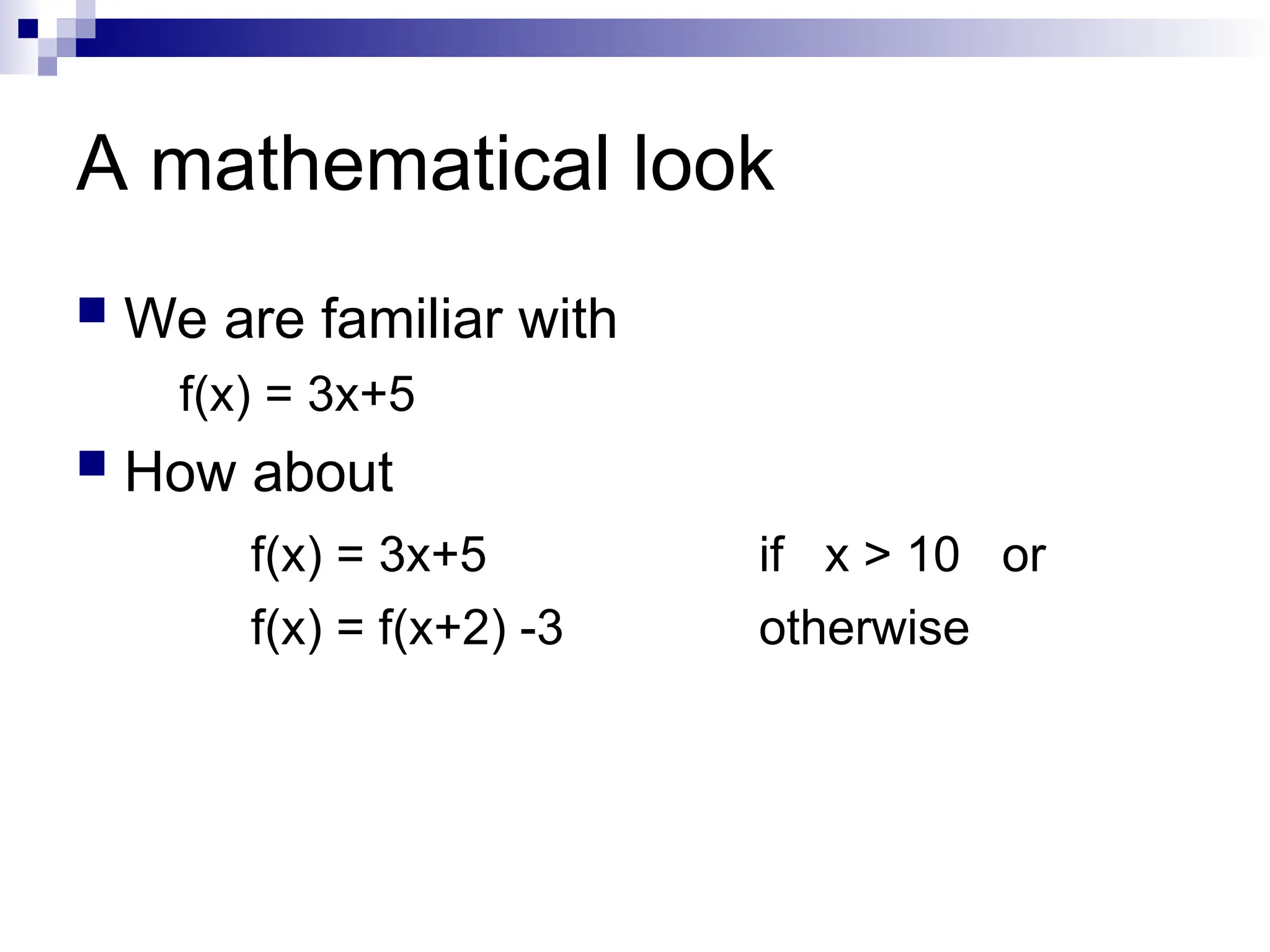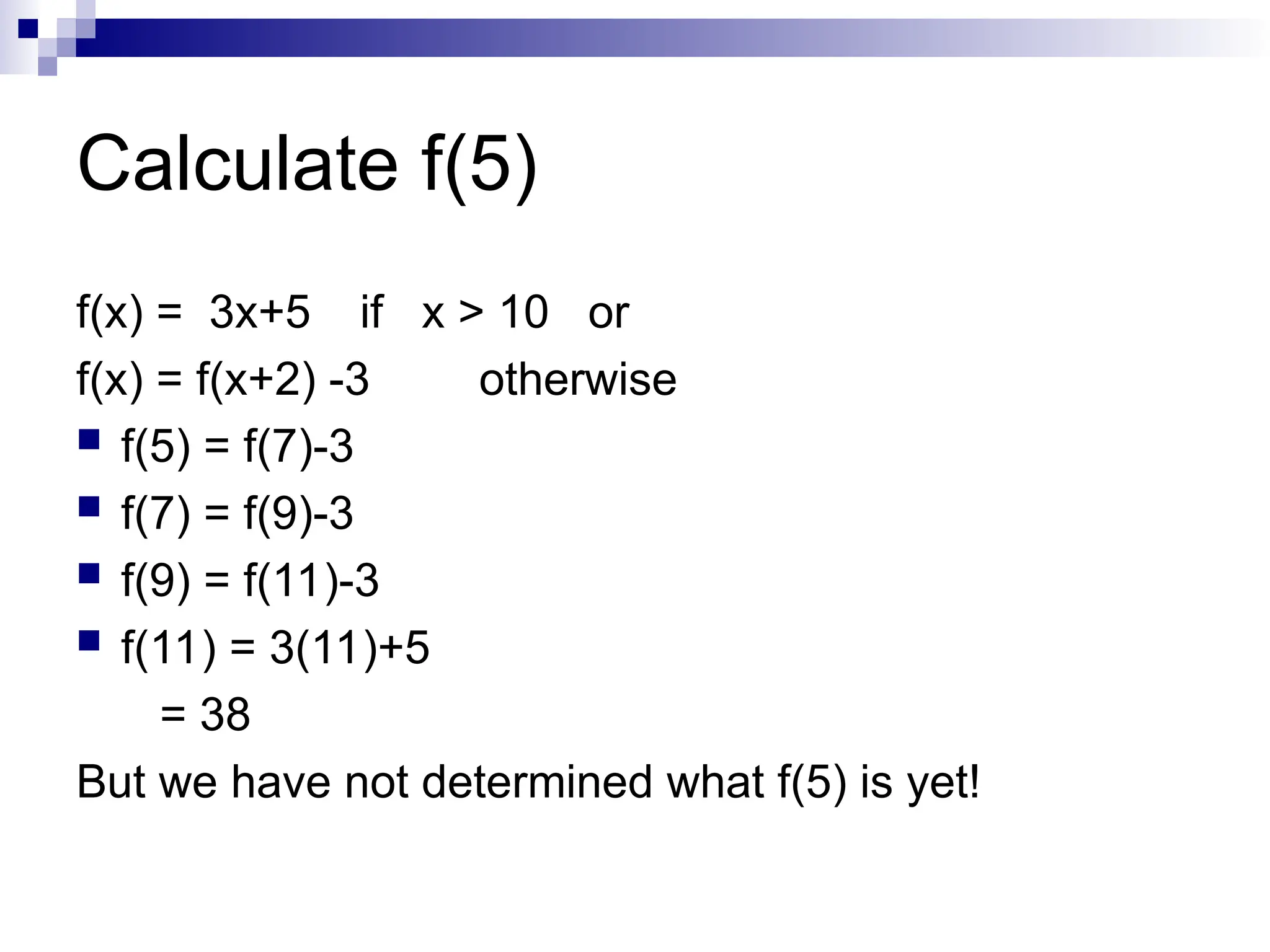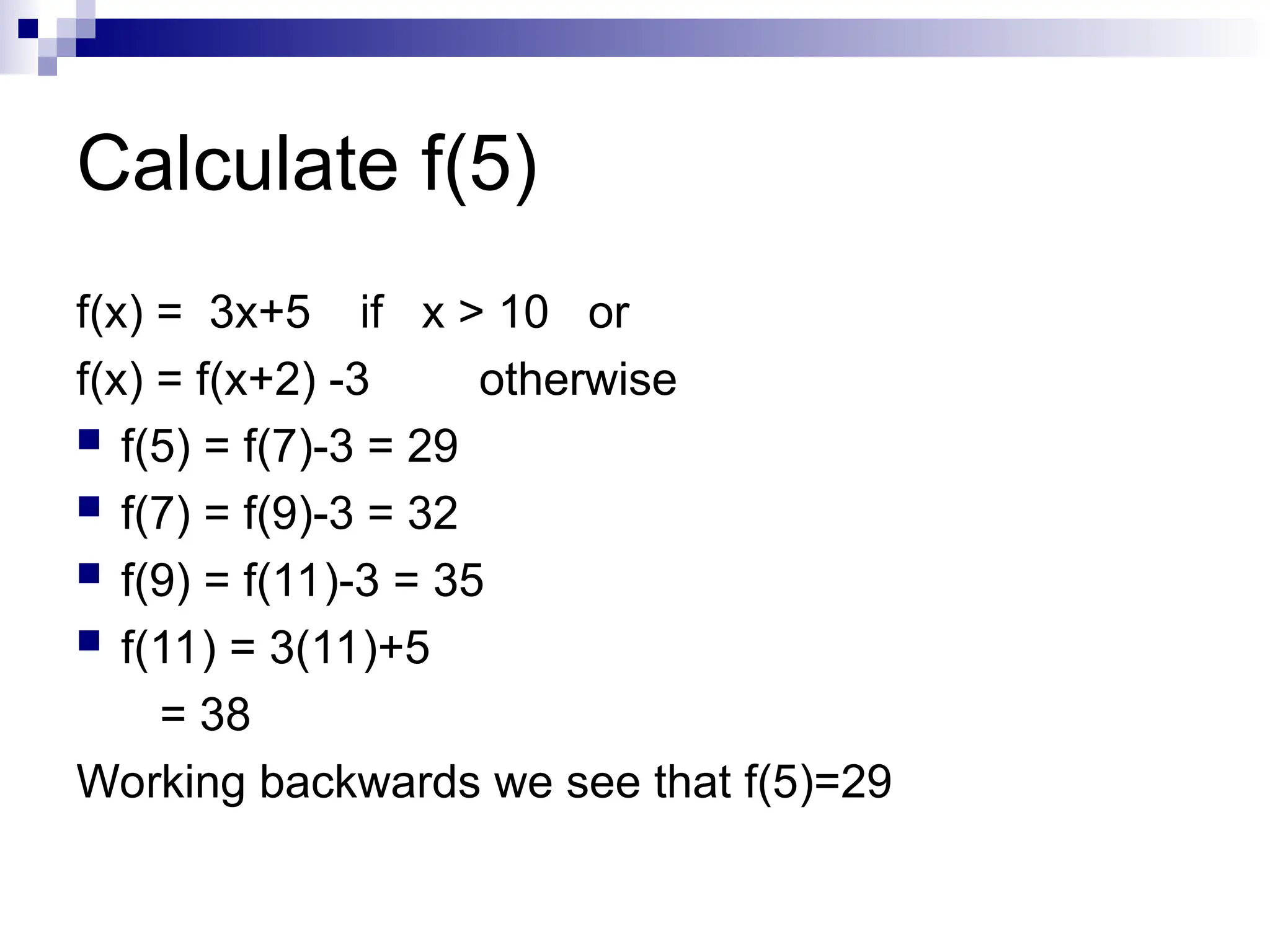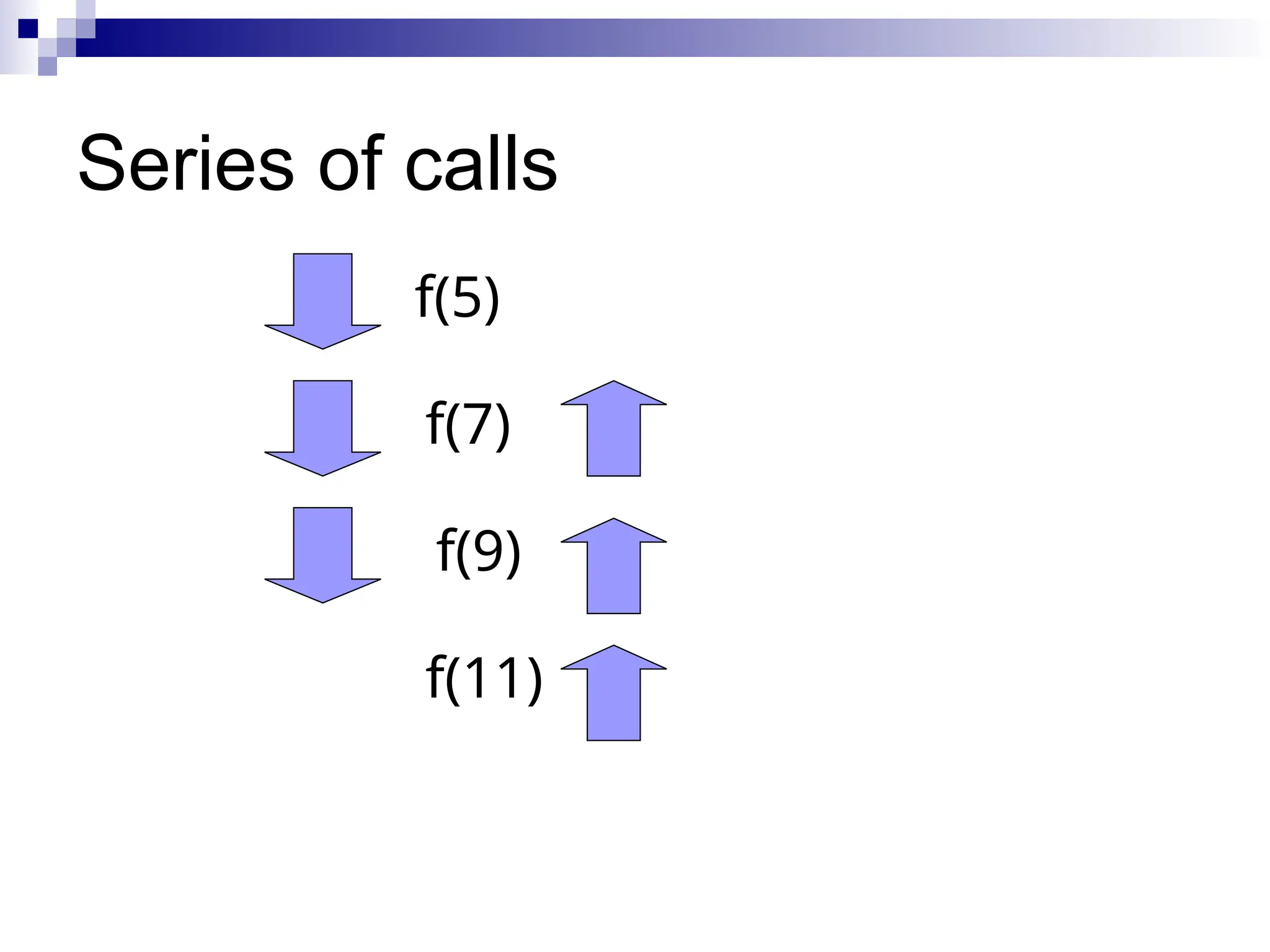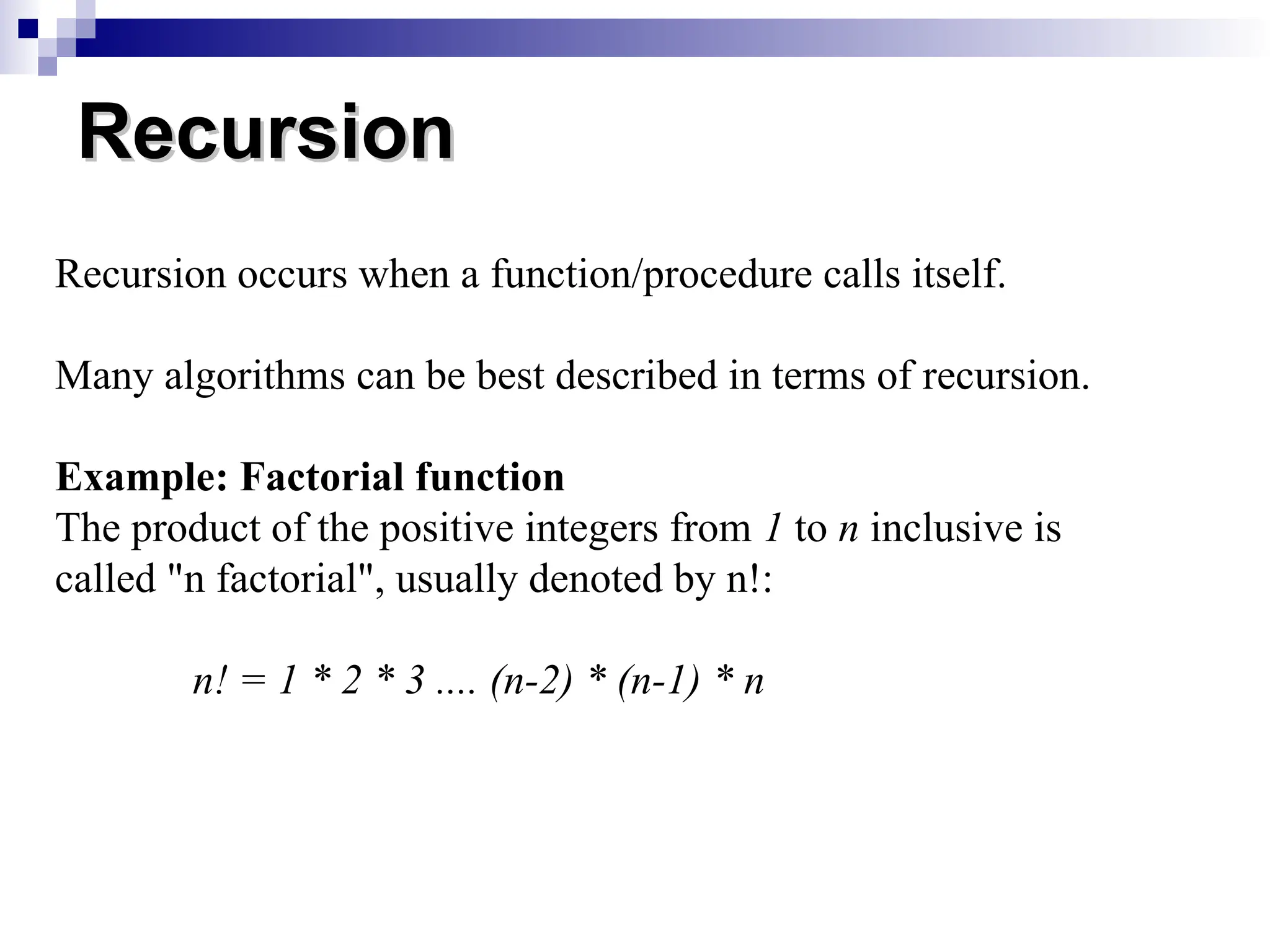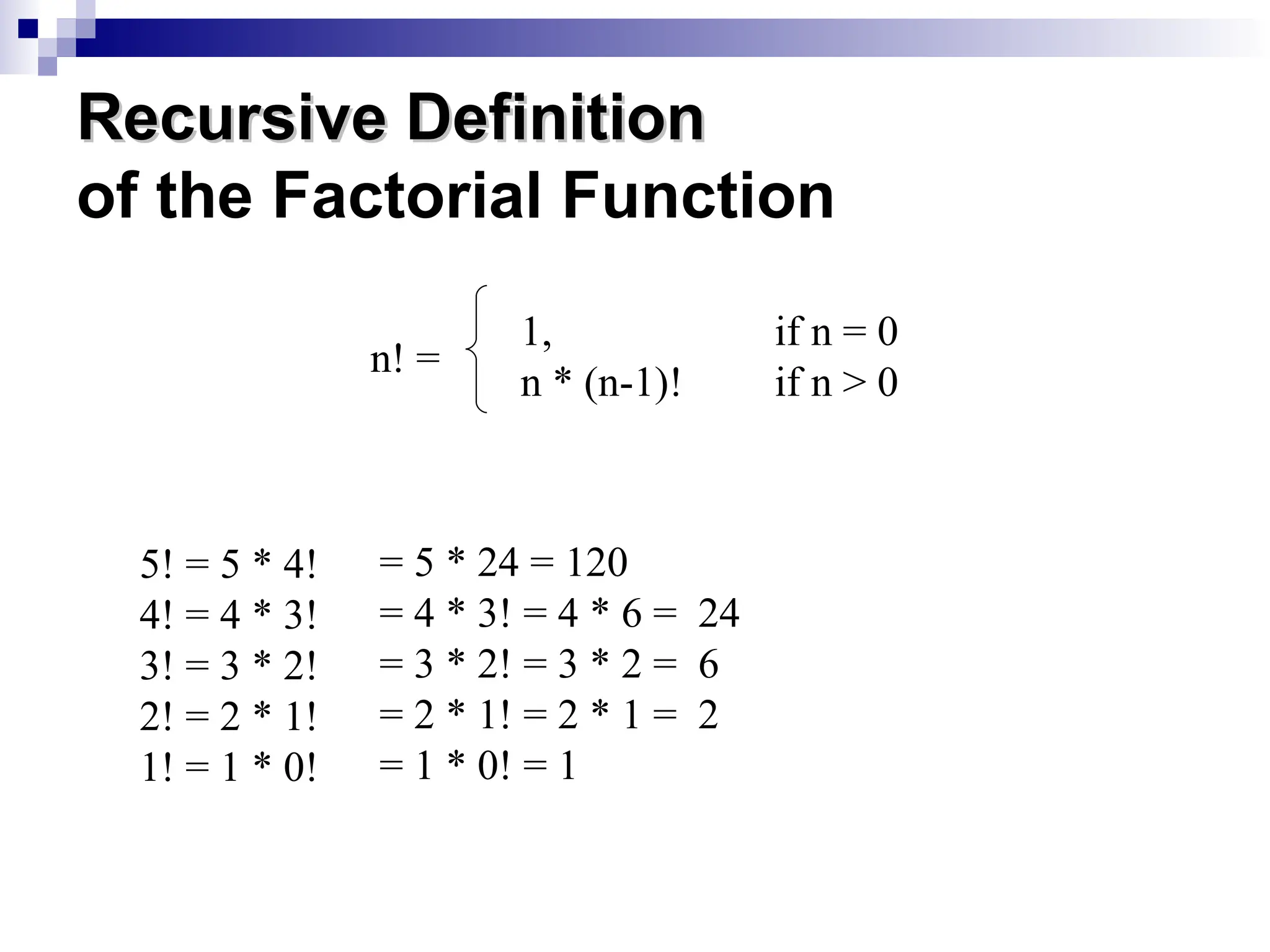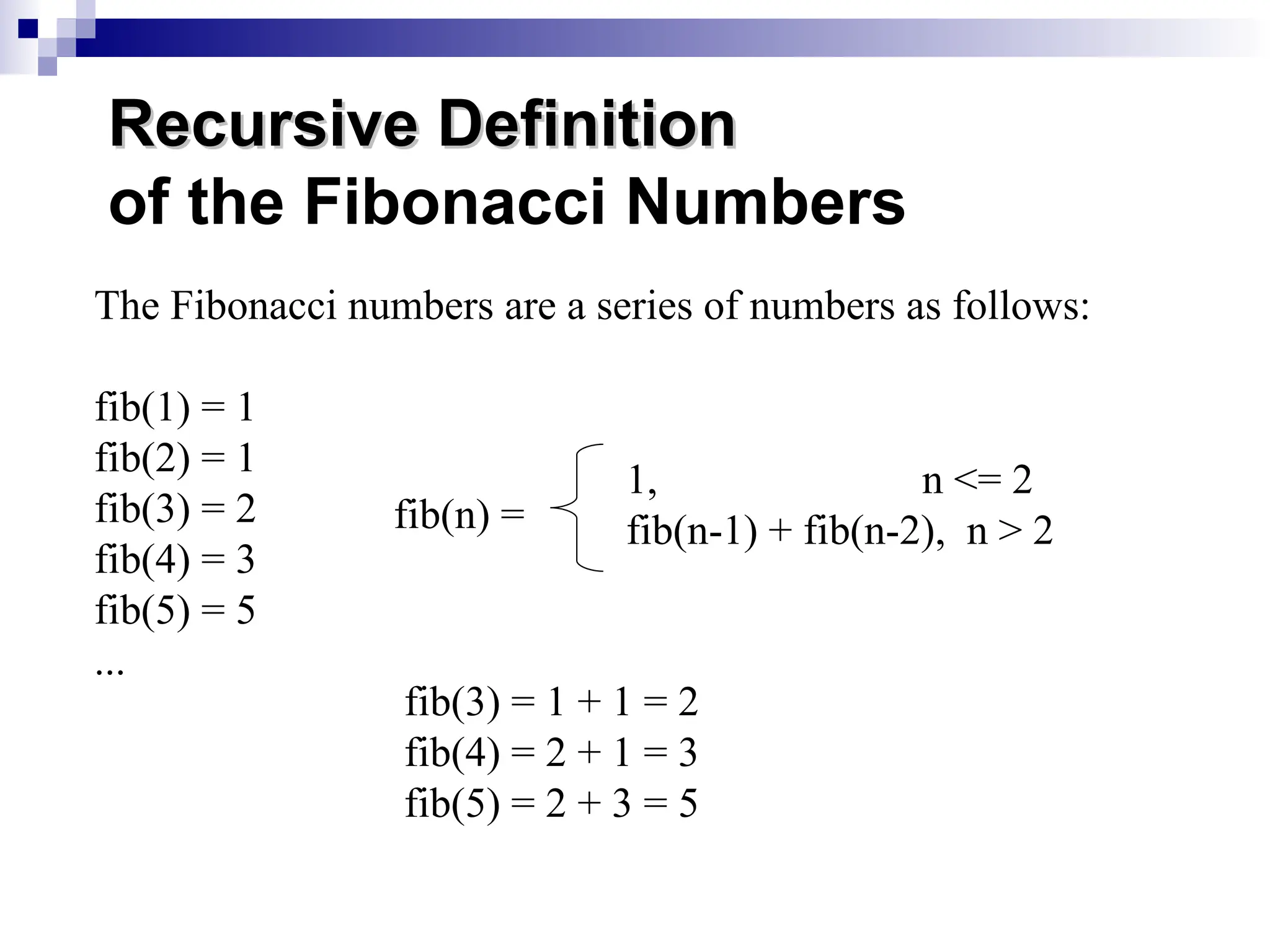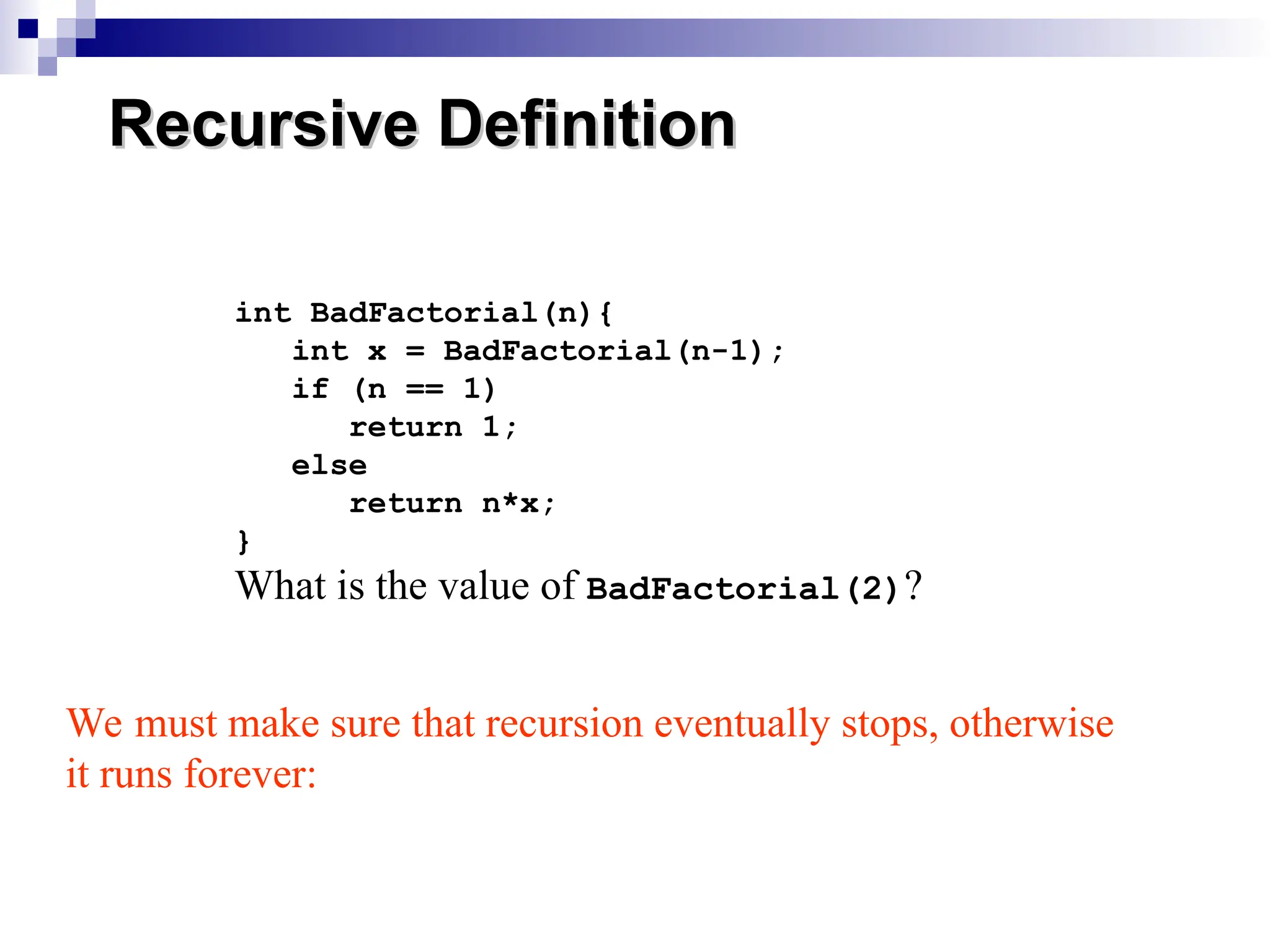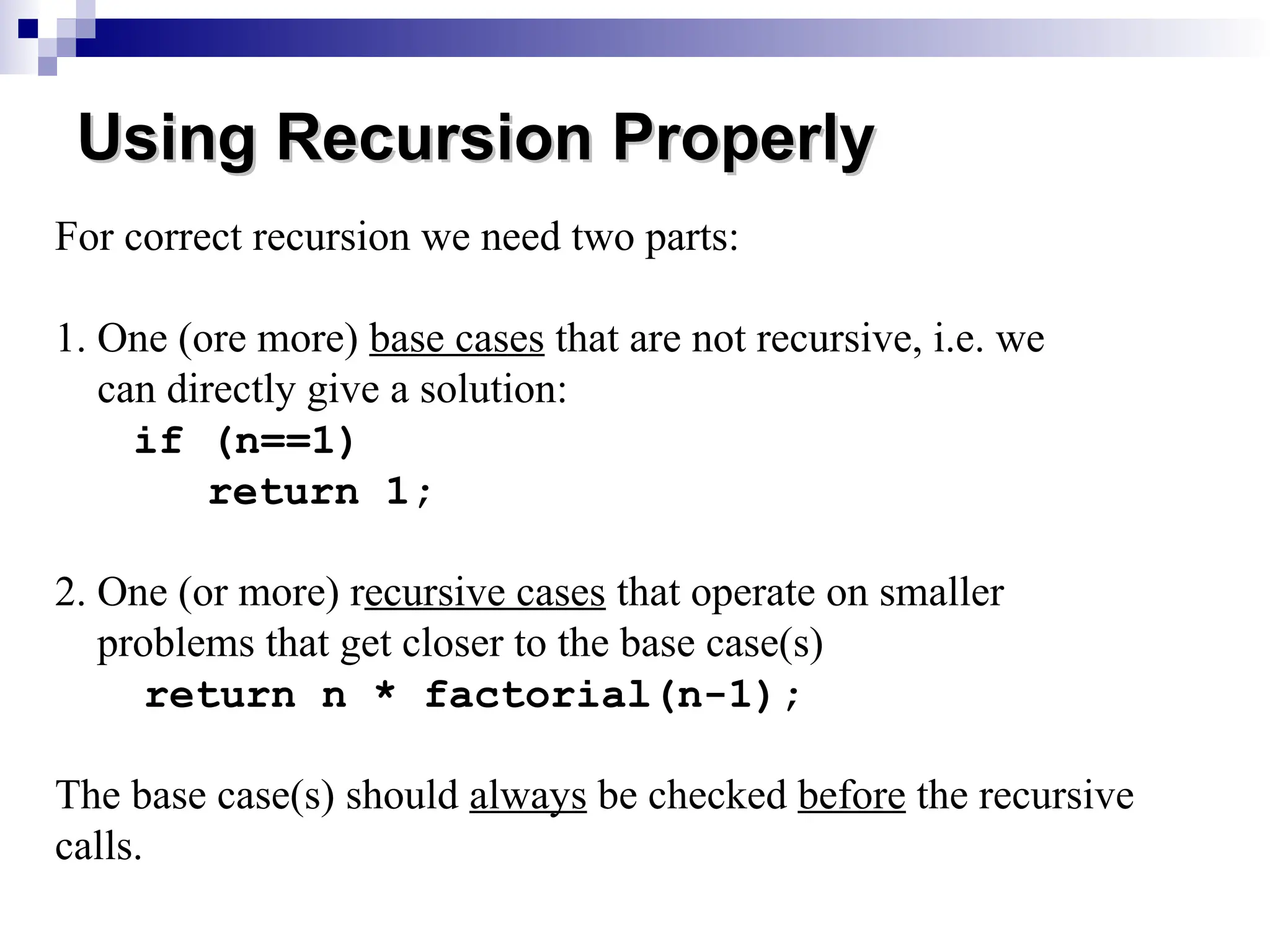The document discusses mathematical functions with a focus on recursion, illustrating the calculation of specific values for functions like f(x) and factorials using recursive definitions. It emphasizes the importance of base cases to ensure recursion stops, highlighting examples such as the factorial function and Fibonacci numbers. Properly structured recursion can solve numerous algorithmic problems effectively.
